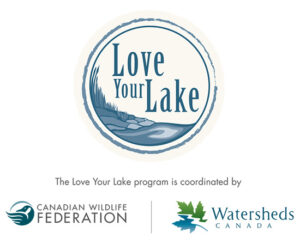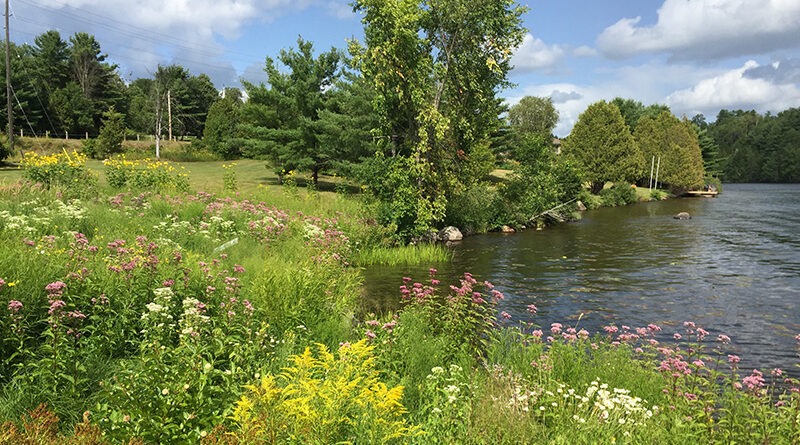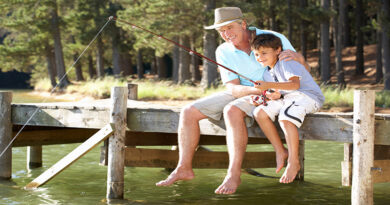Simple Steps to Take Towards Naturalization
Your shoreline was meant to be naturally beautiful! Shorelines that are naturalized are cost-effective, environmentally friendly and add value to your property. They also provide a welcome natural and vibrant habitat for a variety of wildlife.
Here’s your chance to design something unique, by taking a few simple steps:
1. Consider leaving or establishing at least a 10-metre-wide strip of vegetation along your shoreline
A buffer is a strip of vegetation that can line the edge of a shoreline and trap contaminants. You can help create or expand your buffer by allowing natural vegetation to re-establish on its own. Vegetation will return as seeds from neighbouring forests by means of wind and wildlife. If you prefer more of an established buffer, plant native trees, shrubs and wildflowers to actively create a buffer along your shoreline.
2. Work towards allowing native vegetation to cover 75% of your shoreline property
It is recommended that shoreline properties be no more than 25% developed for personal use and 75% be left or regenerated to a natural state. This will help protect water quality and clarity as well as the health of your property. Consider a curved path with wood chips or crushed gravel for gentle to moderate slopes and installing raised and open stairs for steeper slopes. This will limit foot traffic by containing it to one area, minimizing the chances for erosion.
3. Consider no mow zones
You can restore some natural vegetation to sections within your lawn. This will begin naturally if you leave a section of your lawn unmowed. Many native shrubs and wildflowers are appealing and attract songbirds, butterflies and other wildlife. Native landscapes can be trimmed to retain beautiful views of your lake. If you are concerned about geese, adapting your shoreline to include a buffer will also deter geese from visiting your property.
4. Soften your retaining wall
By restoring some natural buffer behind and along the sides of your retaining wall, you can help prevent erosion and can restore some of the habitat connectivity between land and water, which is so critical to our wildlife. If you have a loose rock retaining wall you could also consider adding live stakes of willow which will further help to stabilize slopes and reduce erosion.
5. Consider leaving any natural features on your property
By allowing fallen trees and branches to settle on your shoreline and in the water, you can provide crucial habitat. Turtles use logs to bask and fish use underwater branches and logs to hide from predators and lay eggs. On land, logs provide essential habitat for small mammals, woodpeckers, toads and salamanders.
 Get inspired by following these simple steps towards creating a stunning shoreline this summer! Learn more at LoveYourLake.ca.
Get inspired by following these simple steps towards creating a stunning shoreline this summer! Learn more at LoveYourLake.ca.




